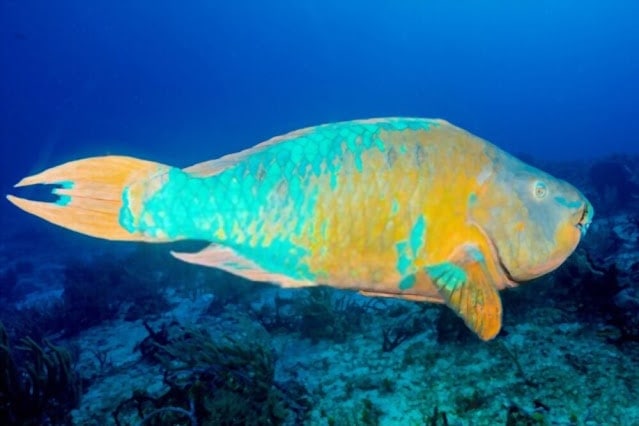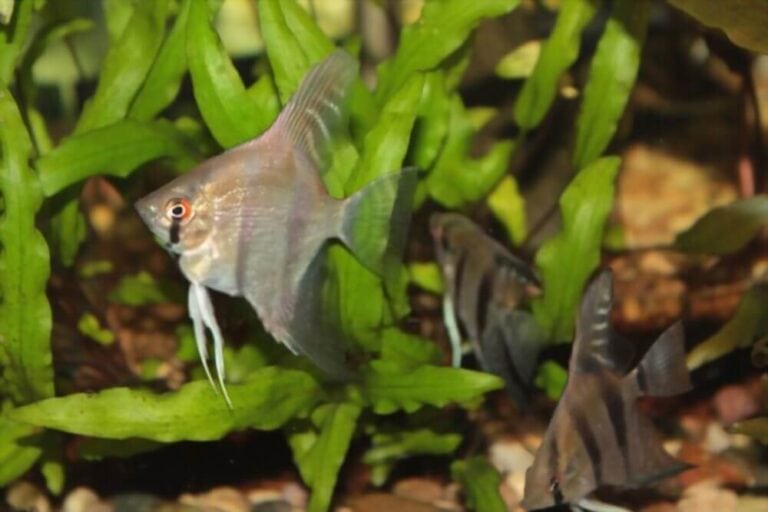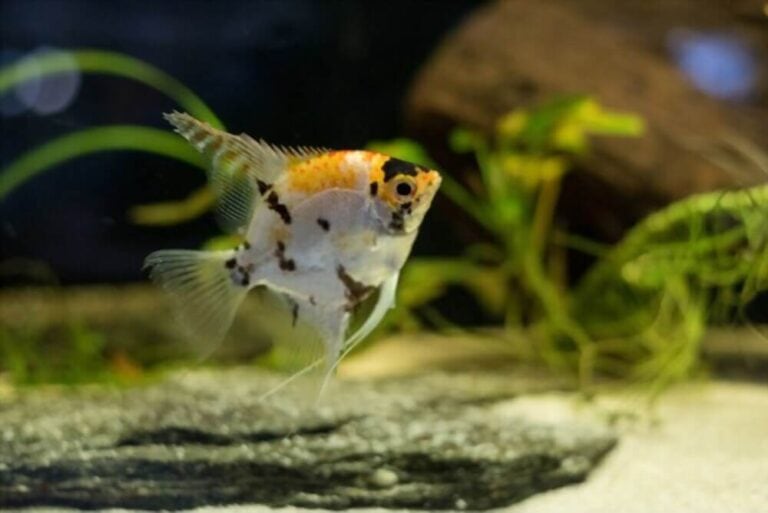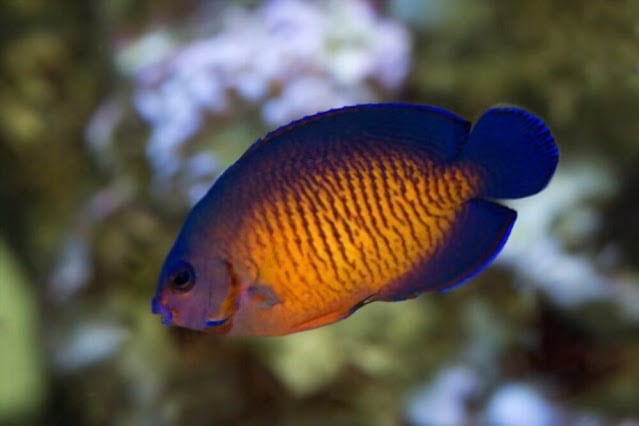Flatfish Guide- Size, Life Cycle, Types, Diet, Care, Tank, & More
A flatfish is a diverse group of fishes that includes more than 800 different species. All of them are given different common names with the suffix flatfish.
They are found everywhere and inhabit the world’s cold and tropical waters but are mainly distributed in the indo-pacific ocean.
Flatfish varieties are caught and commercially sold in food markets all over the world. Most of the marine fishes on your dining table are flatfish of some kind, and yes, that’s not just an assumption. Some varieties are housed as well.
Flatfish Size
The size and appearance of Flatfish species vary thanks to such a vast diversity in their types greatly. You might be thinking that they must look flat as they are named flatfish.
Yes, you are right in your thinking, but not all the fishes with somewhat flat or compact bodies fall in this category. They range in size from small 1.8 inches long Tarphops oligolepis to gigantic to Atlantic halibut, reaching up to 2.5 meters long.
Flatfish Appearance
As far as flatfish’ general appearance is concerned, they show a unique type of metamorphosis from being fry to matured, switching from symmetric to asymmetric bodies.
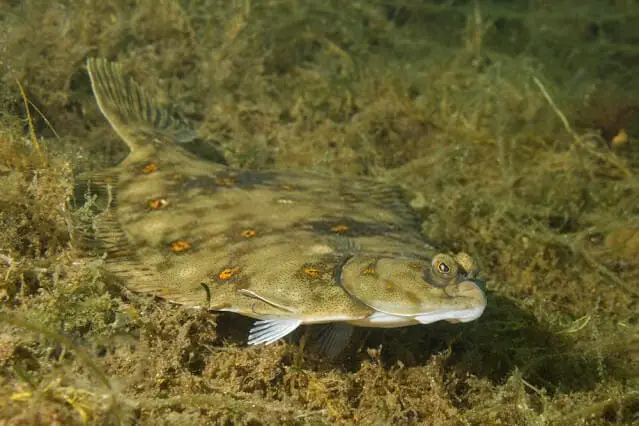
They are round, have a swim bladder, and move freely when they are just fries. But they undergo intense physical changes during the process of developmental differentiation or metamorphosis.
The most noticeable change in their appearance is when one of their eyes migrates to the other side across their head, and their mouth is curved down to the side. So, both of the eyes are on the same side, giving them a weird paralyzed look.
Their bodies become flat or compact with one side with camouflage’s ability due to having fantastic pigmentation to deceive the predators. The underside being sandy white helps them become invisible whenever they have to leave their home’s safe zone.
They are bottom dwellers and are not even motile. They spend almost all of their life after being metamorphosed lying on the floor of the ocean, most of the time burying themselves in the sand and keeping their protruding eyes open, and waiting for the food.
Types of Flatfish
So, this was all the necessary and primary knowledge of flatfish. Now let’s dive deep and discuss a few flatfish varieties individually.
As we have discussed previously, the name flatfish belongs to over eight hundred different species.
It is not easy to identify, recognize, and put them in a specific category as they can have different names in different regions of the world. Most of the time, these names don’t follow the binomial classification.
Here is a list of a few popular essential flatfish varieties with their brief overview.
Flounder
Many of the flatfish varieties are commonly known as flounder in America, including halibut, plaice, dab, and many more. But to be very precise, let’s not take them as flounders as they do not carry the name flounder.
Some of the North American flounder varieties are Summer flounder, winter flounder, southern flounder, starry flounder, and California flounder.
The flounders are also found in the United Kingdom, where they are known as European flounders. They are heavily mistaken for Britain’s place because of the striking resemblance between the two. Flounders of the United Kingdom have more of a round appearance with prominent dorsal fins.
Plaice
The name plaice is assigned to a beautiful group of flatfish with great commercial importance both in America and Europe.
Usually, plaice is known as right-eyed flounders with four to seven bony projections near their eyes and these bony ridges distinguish them from actual flounders.
The American plaice is distributed along all of the Atlantic Ocean as well, and on reaching the European side of the Atlantic, it is known to be the rough dab.
The UK is one of the biggest consumers of the place. It is highly delicious and was heavily overfished in the 70s and 80s. The European plaice is a very popular variety of plaice and is distinctive because of the red or orange blotches along its body.
Sole
The name sole is given to many discrete families of flatfish. In North America, People often regard the winter flounder and witch flounder varieties as the soles.
But in Europe, the name sole is precisely given to the members of the family Soleidae. On the pacific coast of North America, some of the species regarded as the soles are Petrale, English Curlfin, and Pacific Dover.
However, the most popular and well-known sole varieties are found in the United Kingdom by the Lemon sole and Dover sole. Dover sole is of great commercial importance in seafood markets. They are easy to catch as they inhabit relatively shallow waters.
However, the lemon sole is pretty hard to be caught because of its small mouth, which makes it very hard to get hooked. Some varieties may range between 0.3 to 0.5 meters long in size and weigh as much as 1.5 kilograms.
Turbot
Turbot is such a popular variety of European flatfish that it is solely caught for commercial purposes and sold in the food markets as the yummiest and overpriced flatfish.
The turbot is highly in demand that many other flatfish are sold as turbot in restaurants. It’s a scam, though. Being overfished for decades, it is regarded as an endangered flatfish. Turbot can gain a maximum length of about 3 feet and weigh up to 22 kilograms.
Flatfish Lifespan
The average lifespan of flatfish ranges from a year to 60 long years. Flatfish range in size from a few inches short-living to almost 3 meter long varieties and may live for decades.
It is not possible to write down the lifespan of over 800 different species of flatfish. However, the lifespan of the few most popular flatfishes is bulleted below.
| Flatfish Name | Average Lifespan In years |
|---|---|
| Flounder | 13 |
| Sole | Male – 15 to 16 Female – 20 to 21 |
| Plaice | 50 |
| Turbot | Male – 2o Female – 25 |
Flatfish Life Cycle
Flatfish is the name of a diverse group of fishes found all over the world’s oceans. Out of 800 species, some are also found in freshwaters and at the deltas where the rivers fall into the ocean.
Flatfish start their life just like any other fish. They are free to move at the larval stage of their life. The flatfish prefer the deeper waters to lay their eggs. The larvae, after being hatched, swim towards the shallow waters.
Unlike the mature flatfish, the fry is just symmetrically round and streamlined. It takes them a month or more before getting metamorphosed into asymmetrical body alignment.
In the process of metamorphosis, their head gets tilted to the side, and one of their eyes gets entirely displaced to the other side, making both eyes sit on the same side.
This side of their body contains such pigmentation which helps them in camouflaging. The other side is the backside on which they lie all the time in the sand.
The flatfish have the ability to change colors on being threatened and make them look similar to the substrate on which they lie thanks to the pigment-containing cells called chromatophores.
Their mating is quite interesting. The males are territorial all year long and court with all the females in their territories. When spawning, the male comes under the females, and both of them rose a few inches from the ground. Female spawns and males release the sperms to fertilize the eggs.
Flatfish Diet
Flatfish are carnivores and feed on a variety of organisms depending upon their size and what stage of their life they are at.
Guppy Tank Guide (Tank Requirements & Tank Mates)
The young flatfish that are rounded, mobile, not much flattened, and not yet settled on the seafloor eat tiny crustaceans, small fishes, larvae, and tiny animals known as planktons.
They are also known to forage on algae when still young. Overall, different flatfish varieties feed on different kinds of crustaceans and mollusks such as crab, lobsters, prawns, different shrimps, clams, mussels, squids, and sea urchins.
They also love to eat many fishes and worms. The flatfish lie on the floor hidden in the sand and wait for the prey to come nearby.
They would readily accept all kinds of live and frozen foods such as shrimps, worms, and other small fishes in the aquarium. The majority of their diet comes from these meaty foods.
However, a few species will also occasionally eat algae but just a bit. Not all, but some species will sometimes accept the tablets as well.
Keeping & Caring Flatfish
Flatfish varieties are not only for commercial importance. But also, they have increasingly been fascinated by hobbyists and aquarium owners. They are hardy and require no particular requirements to be housed. Instead, they make up great additions to the community tanks.
Coral Beauty Angelfish Care Guide
Being hardy, they are tolerant to the levels of ammonia and nitrates to some extent, but the abnormally raised levels of these toxins can cause severe damages. Moreover, they thrive in better-oxygenated water.
Being hardy, they are tolerant to ammonia and nitrate levels to some extent, but the abnormally raised levels of these toxins can cause severe damages. Moreover, they thrive in better-oxygenated water.
Secondly, have proper aeration as the air currents produce water currents and keep the water waving. Filters can also serve this purpose by generating strong water currents.
To make sure that your fish happily acclimates and doesn’t feel stressed, give them an ample amount of room with a thick substrate of sand to burrow in.
One of the few exciting things about housing the flatfishes is that most freshwater varieties can survive and quickly acclimate in the brackish waters except Synaptura salinarum, which is strictly freshwater.
Flatfish Tank Size
Being bottom-dwellers, the flatfish spend their lives lying on the bottom to cover themselves with the sand, becoming invisible.
Unlike other symmetrical fishes, they don’t swim actively in the tank. But despite lying on the ground, they still need a lot of space to burrow themselves in.
They don’t stick to a particular place on the bottom. Instead, they continuously burrow around their territorial space in search of food. With all that being said, it is clear that you need a large-sized tank with an ample amount of space at the bottom.
The recommended tank size for most Flanders is over 100 gallons as they can reach up to a foot long. For most sole varieties, the false freshwater soles are very popular in the aquarium trade, and they require 55-60 gallon tanks.
Many other species have their requirements for the tank. But the general rule of thumb is, they should be provided with plenty of space corresponding to their sizes.
Flatfish Tank Setup
Setting up a tank for the flatfish is just as easy as setting up one for any other fish. There is no particular requirement that these fish need in their tank.
The fascinating thing about flatfish is that the freshwater varieties can also be housed in saline tanks with the marine types.
The substrate is of prime importance for flatfish tanks. Sandbed is their home, and sand is their blanket. They keep hidden under the sand unless food doesn’t come nearby.
3 to 4 inches of sand is suitable for the flatfish tank. You can also use a mixture of rounded gravels and sand as substratum.
Temperature & Tank Condition
Being global, flatfish are found in temperate, tropical, subtropical, and cold waters of the poles. The temperature of the aquarium for flatfish is dependent on where it is coming from.
The cold water varieties verily need a temperature range from 12-18 degrees Celsius. And the tropical varieties thrive at a range of 23-27 degrees Celsius.
Maintain a thermostat in the tank, which continuously keeps a check on the water temperature. The temperature of the aquarium may fall due to the cold surrounding.
In that case, the heater of the aquarium can bring the temperature back to normal. The tank lights can help maintain the temperature, but the heater can serve the purpose when the lights are out.
Filtration is one of the essential components of aquarium care. For effective filtration, many filtration setups are available in the market. Other than cleaning the debris and removing the toxins, filters also generate water currents.
As we have already noted earlier, flatfishes thrive in higher oxygen supplies for which water needs to have strong waving movements. Filters serve this purpose.
Adding some decor in the form of rockwork or woodwork is also acceptable. The decor adds to the tank’s beauty but should be set at the sides of the tank or the back of the tank and leave the central space of the tank free for them to burrow around.
Flatfish Tank Mates
Choosing the tankmates for the flatfish is very critical. It is because of two reasons. Firstly, flatfish will eat any tankmate which will fit in its mouth.
Although some flatfish species are peaceful and they will seize the opportunity if their tank mates are way too small to fit in their mouth easily. Secondly and most important, flatfish are not very much active in approaching the food.
They are just hidden all the time until the food comes at an attacking distance. Because of this, it is very much likely that the food can be eaten by the other actively swimming tank mates before even reaching down the bottom.
Now the solution for this problem lies in the active clock of your flatfish. If your flatfish is nocturnal and active at night, keep it with the tank mates that are diurnal. This way, you can ensure that he eats up the food you offer to your flattened dude.
The large, aggressive, semi-aggressive, and predatory fishes can be a threat to your flatfish. Therefore they should be avoided to be housed with large, aggressive carnivorous fishes.
FAQs
What is the largest flatfish?
Halibut is the largest known flatfish as of yet and is known as the king of bottoms. There are two halibut varieties, the Alaskan or pacific halibut, and the Atlantic halibut.
The Atlantic halibut holds the World record of being the largest and heaviest flatfish weighing in at 515 pounds and more than 8 feet long. The average lifespan of the halibut is 30-40 years.
Meanwhile, it is also believed that they can live up to somewhere around 50-55 years. In the first 3 to 4 years of their development, they live in the shallow nursery waters and then return to the deep sea.
How do flatfish swim?
Being compressed and lacking the swim bladder, the flatfish stays very close to the bottom while swimming.
They don’t completely leave contact from the seafloor while swimming. Instead, they propel themselves forward using the seafloor. Their belly side faces upward, and the backside is always down to the ground.
How do flatfish stay safe?
The flatfish have developed a unique way of protecting themselves in the evolutionary process. The adult flatfish don’t have swim bladders and are not rounded and streamlined to cut a pass through the resistive water quickly to hide.
Evolution says ‘survival of the fittest.’ The competition of being fit enough to survive has led them to evolve a special behavior called camouflaging.
Their upper body contains specialized pigmented cells known as chromatophores. These cells can verily change colors to blend the fish up with the surrounding to deceive the predators and the prey.
Moreover, they can completely bury themselves in the sand bed with their bulging eyes wide opened to look around. This way, the flatfish can stay safe, and most of the time, it works for them.
